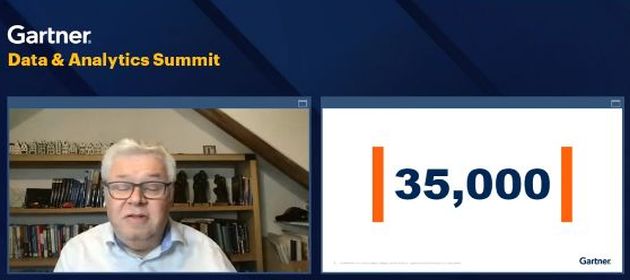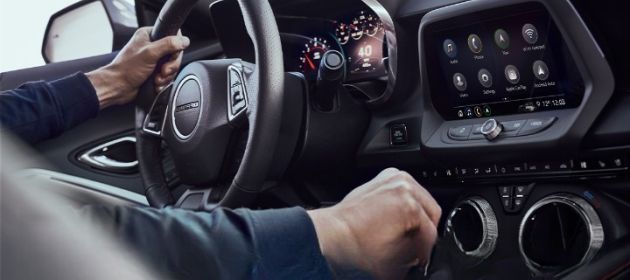Peter Thiel interview question:
What is the one thing that’s true but nobody believes it when you tell them?
I have not attended an interview with Peter Thiel nor do I have any intention of doing so. But I do know 10 things that are true but nobody believes me when I tell them.
I’ll cover five of them in this post and five more in a follow-on post.
Let’s get into it.
#1. Best in class ecommerce conversion is 4%
Out of 100 people who visit amazon.com website or open the Amazon shopping app, only four people make a purchase.
When I share this insight, most people – including buyers and sellers – have a big problem with it. They wonder why the heck would 100 people visit a website / open an app without having any purchase intent.
But it’s true. In consumer behavior, this is called Shopping Cart Abandonment. There are many reasons for this behavior:
- Window shopping à la brick and mortar stores.
- Exorbitant shipping costs. Most ecommerce websites, including Amazon, show only the basic price on the product page. It’s only on the checkout page that they display the shipping charges. Many people bail out after seeing them. Take me for example. Since I’m a Prime member, I refuse to pay for shipping. Most items I purchase are eligible for Prime, so they attract no shipping cost. But, when the one-odd item does, I abandon my shopping cart. (At the risk of digressing a bit, let me share an interesting experience: When I decided to reorder Nescafe Sunrise on my own, Amazon showed ?175 shipping charge, and I bailed out. But, 10-12 days later, when Amazon sent me a PUSH notif to remind me to reorder the product based on my purchase history, shipping was free! But, by that time, I’d already bought the instant coffee from somewhere else since I was not ready to pay the ?175 shipping charge quoted by Amazon earlier.)
- Taxes extra. Same as above, but for taxes. In USA, base prices do not includes taxes, which are shown only on the checkout page. This is not a factor in India, UK and EU, where, by law – or generally accepted business practice – base prices for B2C products are inclusive of taxes.
- Friction and / or failed payment caused by two factor authentication / strong customer authentication for online payments in India and EU. More at Why Two Factor Authentication Is A “Conversion Killer” & “Blood Pressure Booster”. This is not a factor in USA, where online payments are not subject to 2FA / SCA.
While on the subject, the best in class conversion in brick and mortar stores is 8%. Price, unfit for purpose, and stock-outs are the top three conversion killers here. (Shipping cost is obviously not an issue here. While additional taxes is, most shoppers know about it in advance. The ones that learn about it at checkout likely find it uncool to bail out at that stage.)
#2. Bank decides whether a merchant can accept credit card or not
Many people assume that merchants accept credit card if they’re ready to cough up 2-3% MDR to their bank. Per contra that merchants don’t accept credit card since they’re not willing to cough up MDR. They also believe that merchants accept UPI only because it has Zero MDR. See this comment on LinkedIn for an example.
That’s not true.
Anybody with a bank account can accept UPI – it’s like a right. However, anybody cannot accept credit card – it’s like a privilege.
A lot of shops don’t accept credit cards because they CANNOT. Since they pose high Acquirer Risk, Acquirer Banks do not issue Merchant Accounts to let them accept Credit Card. 2-3% MDR is moot.
In USA, UK, Merchant Aggregators like Square (brick-and-mortar) and Stripe (online) solve for this by taking a Merchant Account in their own name from Acquirer Bank and issuing sub Merchant Accounts to nano and micro merchants. As against 2% MDR charged by Acquirer Banks, Square / Stripe charge more, typically 2.75%. Still they have hundreds of thousands of small merchants as customers. This shows that even small merchants want to accept credit card despite paying higher fees (2.75%) than the fees levied by banks (2%).
I’m not sure if the Indian construct of Payment Aggregators is the same but I know that many small merchants use eZetap / RazorPay, mSwipe et al to accept credit card. As a matter of fact, they incur a higher fees than the MDR levied by banks.
So, contrary to popular misconception, small merchants pay MORE than large merchants – “Poverty Premium”, as it’s called in the industry.
tl;dr: It’s the bank that decides whether a merchant can accept credit cards or not.
Because credit card poses Acquirer Risk, it’s down to the acquirer bank to assess the stability and creditworthiness of a merchant before deciding whether to issue a merchant account, which is a prerequisite for a merchant to accept credit card payments.
While a merchant is free not to accept credit card, it’s not up to him or her to accept credit card. In other words, when it comes to credit card acceptance, merchant can say NO but it’s the bank that has to say YES.
(I must hasten to add that, after signing a merchant agreement, merchants cannot say no. They MUST accept credit card, come what may. If they cannot afford the 2-3% MDR or want to stop accepting credit card for some other reason, they must surrender their merchant agreement.)
#3. Public Sector Bank can be Private Bank
Public Sector Bank: Owned by government.
Private Sector Bank: Not owned by government.
Private Bank: The business of providing wealth management services to individuals e.g High Networth Individuals (HNI) aka Private Wealth Management (PWM).
There are some banks exclusively engaged in the PWM business (e.g. Julius Baer) but a PWM business could equally well be embedded as an SBU inside a Private Sector Bank (e.g. Deutsche Bank PWM) or a Public Sector Bank (e.g. State Bank of India PWM).
Click here for more.
After mislabelling full-service private sector banks as "private banks" all this while, @EconomicTimes finally gets the real meaning of private banking. pic.twitter.com/T1pcCLu10V
— Ketharaman Swaminathan (@s_ketharaman) March 7, 2018
It’s fairly common knowledge that PWM charges higher fees but doesn’t return more than savings accounts. That works because the goal of HNIs and retail investors are not the same.
Fact: HNIs get same returns as retail investors but pay more fees.
But dezerv's pitch – "Committed To Helping You Invest As HNIs Do" – will work because retail investors don't realize that HNIs seek capital protection rather than growth. https://t.co/U5w75dFKjv— Ketharaman Swaminathan (@s_ketharaman) June 6, 2022
According to S2E2 of HBO TV Show Industry, industry insiders use the moniker “Pussy’s Wet Mister” to refer to the key differentiator of the PWM business. This might sound uncharitable but I don’t make the rules.
#4. Your shares belong to your broker
Although you can view your DEMAT stock holdings on the depository’s website, you cannot withdraw your shares from there. That’s because your broker – not you – is the beneficial owner of your shares. What you have is an IOU from the broker. If your broker goes bust, the IOU is not worth the paper it’s written on, and your shares go poof – except in jurisdictions where your stocks are covered by insurance e.g. SIPC in USA. There’s no equivalent of SIPC in India.
That’s why many clients of Karvy and BRH Wealth Kreators reportedly lost their shares when these two brokers went bust. More details at Who Really Owns Your Shares?
#5. Average human being takes 35000 decisions a day
I couldn’t believe this figure but, if it’s cited by Gartner, it must be true?
While many of these decisions are trivial and made subconsciously, a significant portion of them are important and taken after careful thought.
That’s a wrap for the first part of this blog post.
I will cover five more answers to the Peter Thiel interview question in the second part.
Watch this space!


